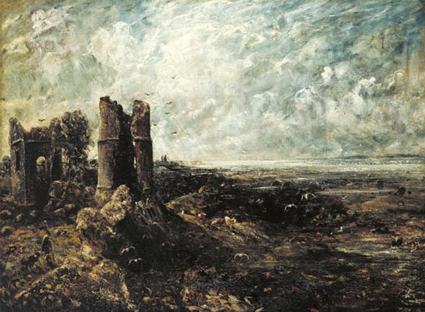The Yale Center for British Art, in New Haven, is one of the great small museums of the world. An austerely pristine block of concrete and glass, it was designed by the architect Louis Kahn in the late 1960s and completed in 1978. Its purpose was to house the gift of his entire British art collection from Paul Mellon (1907-99) to Yale University. The museum remains relatively little known outside America, but it contains what is certainly one of the most remarkable collections ever amassed by a single individual – some two thousand paintings, fifty thousand drawings and prints, as well as thirty-five thousand rare books and manuscripts. Such was Mellon’s wealth and munificence that he bequeathed all this to his old university, as well as paying for the building and providing an endowment sufficient to maintain it, to staff it with curators and fund academic research there in perpetuity.
A tightly selected group of pictures from the Yale Center recently went on display at the Royal Academy’s Sackler Wing under the title “Paul Mellon’s Legacy: A Passion for British Art”. The resulting gem of an exhibition is a monument to Mellon’s acuteness of taste and his phenomenal acquisitiveness. Those previously unaware of Mellon’s activities may be astonished to discover just how many under-appreciated masterpieces of British painting one man managed to spirit away to America, from under the very noses of those running Britain’s own museums and art institutions, in the not so distant past.
The Paul Mellon Collection is to British eighteenth and nineteenth century art what London’s National Gallery is to European Old Master Painting. Virtually every artist of distinction is represented at the very highest level of quality. In the space of less than two decades, starting in 1959,...


